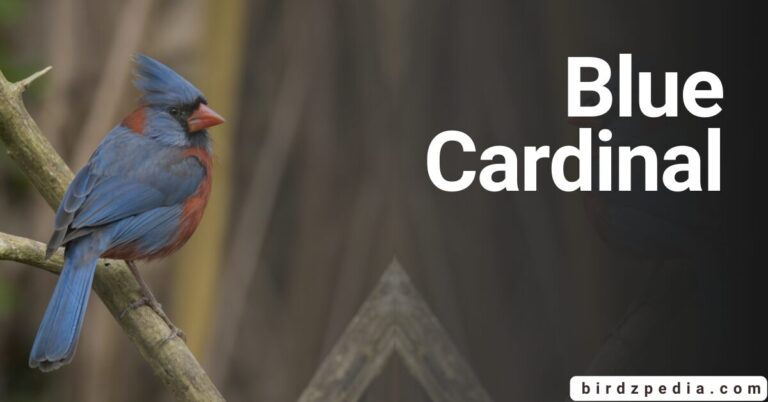AFRICAN OPENBILL[Anastomus lamelligerus]: Stork Species, Habitat, and Behaviors
Scientific Classification
| Kingdom | Phylum | Class | Order | Family | Genus | Species |
|---|---|---|---|---|---|---|
| Animalia | Chordata | Aves | Ciconiiformes | Ciconiidae | Anastomus | Anastomus lamelligerus |
African Openbill
The Ciconiidae family includes the African openbill as one of its stroke species. The majority of them can be found in western Madagascar and Sub-Saharan Africa. They have a spotty distribution, but are thought to be locally plentiful in this area. According to some specialists,
there are two different species of openbills: A.I. madagascariensis, which lives on the island, and A.I. lamelligerus, which is dispersed across the main content. The mature A.I. madagascariensis more pronounced longitudinal ridges serve as the basis for the scientist’s distinction between two subspecies.

Summary
- Appearance: The Anastomus lamelligerus is a medium-sized stork characterized by a distinctive bill that has a gap between the mandibles, giving it the name “Openbill.” The bill has a unique shape with a visible notch, and it appears as if the upper and lower mandibles do not meet.
- Coloration: The plumage of the African Openbill is mostly black, and it has long legs. The eyes are dark, and the facial skin is usually gray.
- Habitat: These storks inhabit a range of wetland environments, including freshwater lakes, rivers, swamps, and floodplains. They are often seen wading in shallow water while foraging for food.
- Feeding: The specialized bill of the Anastomus lamelligerus is adapted for feeding on aquatic snails, which constitute a significant part of their diet. They also consume other invertebrates, small vertebrates, and plant matter.
- Behavior: They are known for their unique feeding technique, using their specially adapted bills to extract snails from their shells. They may be observed foraging in groups.
- Breeding: Breeding colonies of Anastomus lamelligerus are formed in trees, and the storks construct stick nests. Breeding usually occurs during the wet season when food resources are abundant.
- Conservation Status: The Anastomus lamelligerus is generally considered to be of Least Concern in terms of conservation status, as it has a wide distribution and is not currently facing significant threats. However, localized declines may occur due to habitat degradation and human activities.

Size guide
With a body length of up to 80 to 94cm (31.5–37 in) and a beak length of 135–196mm (5.3–7.7 in), A.I. lamelligerus are medium-sized birds. Males have a longer bill and are slightly larger than females. There is a space between the top and lower mandibles of the bill, which has a brownish hue.
This gap between the two mandibles facilitates holding the snails’ shells. A spherical object being carried by the stroke is kept from sliding forward by the mandible’s convergent tip.

Sounds
When Anastomus lamelligerus are in groups, they make noise to communicate with other birds; otherwise, they remain silent. especially true in reproductive colonies when partners or rivals coexist. They also makes loud croaks and honks..
Flighting style:
They can fly for extended periods of time during the migration, averaging 200–210 flaps per minute. Additionally, they can use their thermals for long-distance flights, particularly when traveling to and from far-off feeding areas.
This saves them a lot of energy while enabling them to travel great distances in search of food. The long, broad wings of the openbill are stretched wide, making it ideal for soaring on air currents as it soars with its neck and legs extended.

Diet:
- Diet Composition:
- The primary diet of open bills consists of aquatic snails, supplemented by insects, frogs, crabs, fish, worms, and freshwater mussels.
- Observations include instances of open bills consuming land snails.
- Specialized Feeding Technique:
- Open bills employ a unique and highly specialized feeding technique.
- Detection of prey occurs through sight or by holding it in the mouth, using the lower jaw to slice the muscle that secures the prey while moving through shallow water.
- Freshwater mussels can be opened by separating their shell valves with the lower mandible.
- Prey Detection and Consumption:
- They detect prey through visual observation or tactile means in shallow water.
- The lower jaw is utilized to slice muscles holding the prey, and freshwater mussels are opened in a similar manner.
- Nestling Diet and Behavior:
- Nestlings of African openbill storks solely rely on mollusks as their food source.
- Nestlings do not possess the knowledge of eating fish.
- During the eating process, nestlings exhibit a behavior of seeking to cover their heads with their wings.

Habitat:
They may survive in any type of habitat where there is a suitable mollusk prey supply. They have no fresh water left. They are only very seldom found far from humid settings. They are primarily found in marshy places around lakes, ideally surrounded by large trees that act as perches for them. During the rainy season, they can also be found in savannahs that have flooded.
Migration:
The majority of them are stationary residents, while they occasionally travel migratory. their migration’s timing to reach West Africa at the onset of the dry season. When the dry season begins, they migrate in flocks out of desert areas. The weather has a major influence on them.

Behavior:
Preening, rubbing, and stretching are comfort behaviors that they shares with other storks. They also roll and rotate their heads, rubbing the tops of their heads on the feathers on their backs. Other comfort maneuvers include spreading your wings and relaxing while you sunbathe.
Sometimes they will excrete on its wings when in the extended wing posture. This has thermoregulatory functions and is referred to as “urohidrosis.” Mollusks, snails, and other aquatic invertebrates are among the food sources for them
Mostly antagonistic:
| Display Type | Nature of Display | Execution |
|---|---|---|
| Forward Clattering | usually occurs between a bird nesting on one branch and another bird adjacent. | Birds rotate between cocktails, open wings, snap bills, upright feathers, and bill grabs. |
| Snap Display | In the early stages of the breeding season, subtle movement is employed. | The bird stands normally, lifts its bill slightly, and makes one audible snap. |
| Anxiety Stretch | When unsettling objects approach the nest, this is how they react. | The bird is upright, its bill closed, its plumage compacted, it leans forward, its neck arches, and it looks at the unwanted thing. |
Breeding:
- Breeding occurs from August to May, peaking in January through March, with nesting colonies of varying pairs.
- Nests are built in reedbeds, over water, and trees; measuring 50 cm across, constructed with sticks, reeds, grass, leaves, sedges, and aquatic plants.
- Males select and display at nest sites, while females hop between trees attempting to approach nesting locations.
- Violent conflicts may arise if females approach nests too soon; males have the upper hand in mate selection.
- Mating involves the male acknowledging the female, allowing her to approach the nest for copulation.
- Females lay three to four oval, pale white eggs.
- Both sexes share incubation for approximately 25 to 30 days; downy chicks hatch with regular bills and black plumage.
- Chicks are nourished by both parents, fledge between 50 and 55 days after hatching, and display bill disparities over subsequent years.

Threats:
In addition to habitat degradation, other common risks to them include disturbances of their feeding grounds, pesticide-related mosquito contamination, and entanglement in fishing lines. They continues to live in areas that are appropriate for them, although human activities may endanger the species.
This stork in Kenya is at risk from deliberate poisoning carried out by poachers. They are being poisoned by use of a unique baiting method that makes use of a living dummy.The poachers set up a decoy, then disturb flocks of storks, forcing them to congregate near the decoy.
The poachers’ tainted snails are directly consumed by the A.I. lamelligerus when they are near the dummy. The openbill disproportionately affected by this strategy.
Common Names in Different Languages
| Language | Common Name for African Openbill |
|---|---|
| English | African Openbill |
| French | Bec-ouvert africain |
| Spanish | Pico Abierto Africano |
| German | Afrikanischer Sattelstorch |
| Italian | Cicogna beccosaldatore africana |
| Portuguese | Bico-aberto-africano |
| Dutch | Afrikaanse Openbekooievaar |
| Russian | Африканский открывашка (Afrikanskiy otkryvashka) |
| Chinese (Mandarin) | 非洲张嘴鹮 (Fēizhōu zhāngzuǐ hàn) |
| Japanese | アフリカオープンビル (Afurika ōpunbiru) |
| Swahili | Kinyonga wa Afrika |
| Arabic | فتحة أفريقية (Fatah Afriqiya) |

FAQs
- What is the African Openbill?
- The stork species known as the Anastomus lamelligerus is distinguished by its unusual bill, which has an aperture or gap close to the tip.
- Where is they found?
- Sub-Saharan Africa is home to the Anastomus lamelligerus, which is a bird that lives in a variety of wetland environments such as rivers, lakes, and marshes.
- What does the bill structure of the Anastomus lamelligerus look like?
- Near the tip of their bill is a distinct aperture that resembles two distinct portions. This modification is tailored to eat specific kinds of water snails.
- What is the diet of their?
- Their main food source is aquatic snails, which it catches with its unique bill. It might consume other aquatic invertebrates as food.
- Is they considered threatened or endangered?
- Generally speaking, the Anastomus lamelligerus is not regarded as threatened or endangered as of my most recent knowledge update. For the most recent details, it is imperative to consult recent evaluations as the conservation status is subject to change.
- How does they breed?
- Stick nests are normally constructed by Anastomus lamelligerus in trees, frequently in colonies. They deposit eggs, and the parents take turns caring for the young and assisting with incubation.
- Are Anastomus lamelligerus migratory?
- It is well known that they are partially migratory, with some populations moving seasonally in response to shifts in the availability of food and water.
- What are some distinctive behaviors of the African Openbill?
- The Anastomus lamelligerus has a unique bill structure that it uses to pry snails out of their shells, demonstrating a unique eating habit.



![Into The world of the Little Cormorant [Microcarbo niger]](https://birdzpedia.com/wp-content/uploads/2024/01/Little-cormorant-768x402.jpg)
![Black Stork [Ciconia nigra] Haven: Wings, Nature, and Conservation](https://birdzpedia.com/wp-content/uploads/2023/12/African-Openbill-7-768x402.png)


![Embracing Wildlife keel-billed Toucan:[Ramphastos sulfuratus]](https://birdzpedia.com/wp-content/uploads/2024/01/Keel-Billed-Toucan-768x402.png)